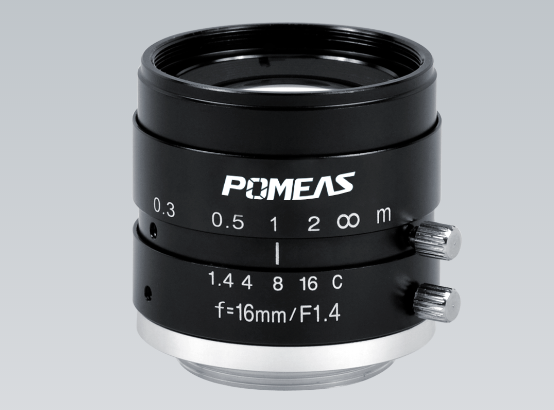Shenzhen Dehong Vision Technology Co., Ltd.
Phone: 137 2892 0823
Fax: 0755-2372-6873
Email: 908450505@qq.com
Website: www.dhkj123.com
en.dhkj123.com
Address: Goldman Sachs Building, No. 18 Shajing
Center Road, Baoan District, Shenzhen
The selection process of industrial camera lenses is a process of gradually clarifying various parameters of industrial camera lenses. As an imaging device, industrial camera lenses usually form a complete image acquisition system together with the light source and the camera. Therefore, the choice of industrial camera lenses is restricted by the requirements of the entire system. Generally, you can analyze and consider the following aspects.
I. Wavelength, zoom or not
It is relatively easy to determine whether the working wavelength of an industrial camera lens requires zooming. For applications that need to change the magnification during imaging, a zoom lens is used, otherwise a fixed focus lens is sufficient.
Regarding the working wavelength of industrial camera lenses, the visible light band is common, but there are also applications in other wavelength bands. Do I need to take additional filtering measures? Monochromatic or polychromatic light? Can the effects of stray light be effectively avoided? After considering these issues, determine the working wavelength of the lens after comprehensive measurement.
2. Special requirements are preferred
Combined with the actual application characteristics, there may be special requirements, which should be clarified first. For example, is there a measurement function, is it necessary to use a telecentric lens, is the imaging depth of field large, and so on. Depth of field is often overlooked, but it is a must for any imaging system.

Working distance and focal length
Working distance and focal length are often considered together. In general, this idea can be adopted: first of all, the resolution of the system is determined, the magnification can be known in combination with the CCD pixel size, and the approximate object image distance can be known in combination with the spatial structure constraints, and the focal length of the industrial camera lens can be further estimated. Therefore, the focal length of an industrial camera lens is related to the working distance of the industrial camera lens, the system resolution (and the CCD pixel size).
Image size and image quality
The size of the image surface of the selected industrial camera lens must be compatible with the size of the camera's light sensitive surface, and follow the principle of "large compatible small"-the light sensitive surface of the camera cannot exceed the size of the image surface marked by the lens-otherwise the image quality of the edge field of view is not guaranteed . The image quality requirements mainly focus on MTF and distortion. In measurement applications, particular attention should be paid to distortion.
Five, aperture and interface
The aperture of industrial camera lenses mainly affects the brightness of the image plane. But in machine vision today, the final image brightness is determined by many factors: aperture, camera gain, integration time, light source, and so on. Therefore, in order to obtain the necessary image brightness, there are many links for adjustment.
The interface of the industrial camera lens refers to the connection interface between it and the camera. Both of them need to be matched. If they cannot be directly matched, they need to be considered for conversion.
Cost and technology maturity
If multiple solutions can meet the requirements after considering the above factors, you can consider the cost and the maturity of the technology and choose the best one.
For example, to choose an industrial camera lens for a coin detection imaging system, the constraints are: the camera CCD is 2/3 inches, the pixel size is 4.65 μm, and the C port. The working distance is greater than 200mm, and the system resolution is 0.05mm. The light source is a white LED light source.
The basic analysis is as follows:
1. For use with white LED light sources, the lens should be in the visible light band. There is no zoom requirement, just choose a fixed focus lens.
2. For industrial inspection, which has a measurement function, so the distortion requirements of the selected lens are small.
3. Working distance and focal length
Imaging magnification M = 4.65 / (0.05x1000) = 0.093
Focal length f ’= L * M / (M + 1) = 200 * 0.093 / 1.093 = 17mm
If the object distance is greater than 200mm, the focal length of the selected lens should be greater than 17mm.
4. The image surface of the selected lens should not be smaller than the CCD size, that is, at least 2/3 inches.
5. The interface of the lens is required to be a C port, which can be used with the camera. No aperture required.
From the analysis and calculation of the above aspects, the "contour" of this lens can be preliminarily obtained: the focal length is greater than 17mm, fixed focus, visible light band, and C port, which can be used with at least 2 / 3-inch CCD, and the imaging distortion is small. According to these requirements, you can further choose, if multiple lenses can meet these requirements, you can choose to use.

attention
Shenzhen Dehong Vision Technology Co., Ltd.
Phone: 137 2892 0823
Fax: 0755-2372-6873
Email: 908450505@qq.com
Website: en.dhkj123.com
Address: 19th Floor, Goldman Sachs Building,
No. 18 Shajing Center Road, Baoan District, Shenzhen
